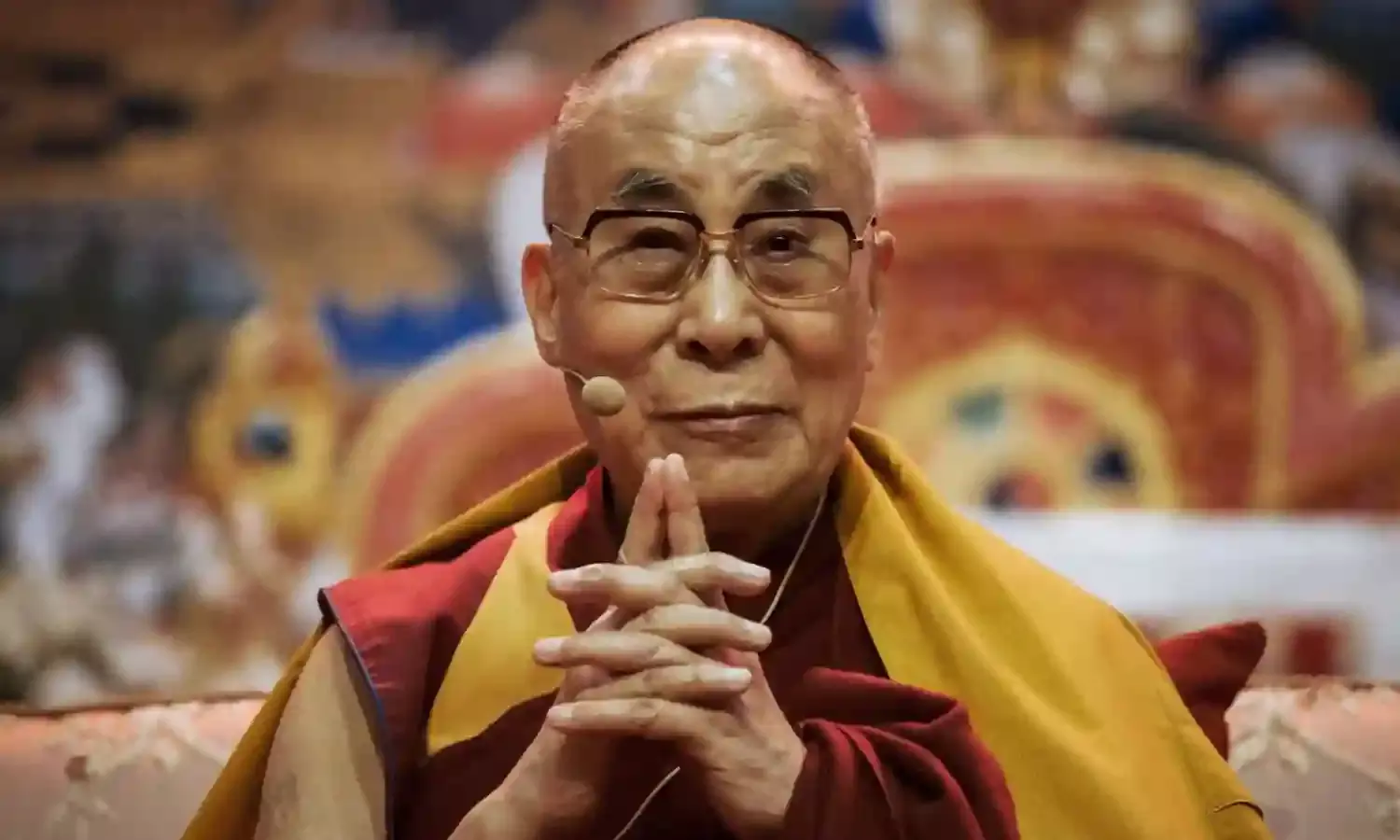The Question of Succession
The Dalai Lama Turns 90

The venerable Tenzin Gyatso, known worldwide as the 14th Dalai Lama, will turn 90 on July 6, 2025. For the millions who revere him, both within the Tibetan community and beyond, this is not just a birthday celebration but an occasion to honour a life dedicated to peace, compassion, and spiritual leadership.
There will naturally be both official and unofficial events commemorating the occasion. Spiritual gatherings, prayer sessions, cultural programmes, and public expressions of devotion will take place across countries where the Dalai Lama’s message of universal compassion has found resonance.
For his countless lay admirers, there will also be the anticipation of a message from him, perhaps somewords of wisdom to help navigate these uncertain times. Many believe that, as the embodiment of Avalokiteshvara, the Bodhisattva of Compassion, hemay once again offer a message that transcends religious boundaries and speaks to the soul of a troubled world.
Traditionally, the Dalai Lama has held both spiritual and temporal authority over Tibet. Even after being forced into exile in 1959, he continued to shoulder both responsibilities. However, in 2011, he voluntarily relinquished his political role, transferring temporal authority to a democratically elected leadership of the Central Tibetan Administration (CTA), based in Dharamshala.
For quite some time now, speculations have been rife that the Dalai Lama might use the occasion of his 90thbirthday to speak about his successor, or even offer some details about the 15th Dalai Lama. Senior leaders of the CTA appeared to have stoked such speculations.
At the heart of the issue lies a growing international concern over China’s claims that it alone has the authority to recognise the next Dalai Lama. China has been insisting that it would oversee the process of identifying the next seniormost spiritual leader of a vast number of Tibetan Buddhists.
This is seen by many as an attempt to usurp the spiritual authority of Tibetan Buddhism to tighten political control over Tibet and diminish the influence of the Lamas and the Tibetan Government-in-Exile, once the Dalai Lama is off the scene. Beijing perhaps expects that if it can appoint a successor who gains even partial recognitionthrough state propaganda and international diplomacy, China will try to present its chosen figure as the “real” Dalai Lama, thereby muddying the waters and weakening the global movement for Tibetan rights.
But China’s line of thinking is likely to face a formidable obstacle. For devout Tibetan Buddhists, the location, identification, and installation of the Dalai Lama is a sacred process, governed by centuries-old rituals and divine insight. It is the prerogative of the incumbent Dalai Lama to leave behind signs indicating the circumstances and location of his rebirth. High-ranking lamas then interpret these signs through a rigorous and spiritually guided process to locate and identify the new spiritual head.
Putting all rumours at rest, the Dalai Lama himself has come out with a statement on 2nd July, ahead of his birthday, that the institution of the Dalai Lama would continue. He also stated that the Gaden Phodrang Foundation, a trust he founded in 2015, would locate and identify his successor. He made it categorical that only this trust, and no one else, had any role to play in the matter of his successor, thus ruling out any attempt by the Chinese government to hoist its choice as the next Dalai Lama.
Now that the question of the continuation of the institution of the Dalai Lama is settled, the speculation has shifted to where the new Dalai Lama would be found upon the passing of the incumbent Dalai Lama.
The 14th Dalai Lama has already made an important disclosure in this regard in his recent writing, that his successor will be born in the “free world”—a clear message that rules out a birth in Tibet under Chinese control. This, together with his latest statement, has settled the matter so far as the Dalai Lama and the Tibetan Government in Exile are concerned.
China’s initial reaction has already come by way of a Foreign Ministry spokesperson in Beijing rejecting the “plan of succession” as announced at Dharamsala. China may further accuse India, where the Dalai Lama has been in exile since 1959, of playing a role in sustaining what it sees as separatist sentiments among the Tibetans. That is a charge India has been careful to deflect for years, even as it continues to provide refuge and support to the Tibetan diaspora.
What lies ahead remains uncertain. India may not come out with any immediate response, and will take an appropriate stand in due course after carefully considering all relevant aspects of this issue, whichneeds a very careful handling, as India navigates the rather choppy waters of its relationship with China.
Sandip Mitra retired from the Indian Foreign Service. The views expressed here are the writer’s own.



